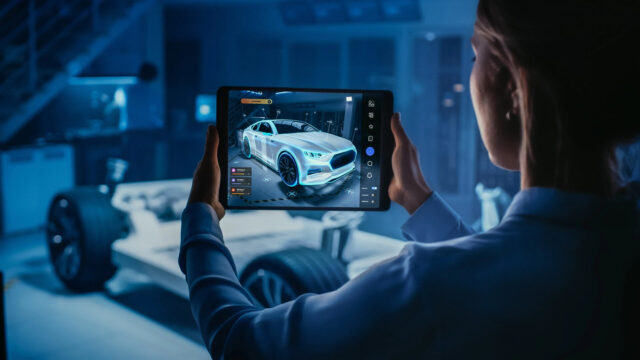
In a world driven by technological advancements, 3D technology has emerged as a revolutionary innovation with vast potential. From movies and gaming to healthcare and manufacturing, 3D technology is shaping various industries and redefining the way we experience the world. This article aims to explore the concept of 3D technology, its future prospects, and its wide range of applications in different fields.
Understanding 3D Technology
What is 3D Technology?
3D technology refers to creating or replicating three-dimensional visual representations of objects or environments. Unlike traditional two-dimensional images, 3D technology adds depth and perspective, allowing viewers to perceive depth and interact with virtual objects. It creates a more immersive and realistic experience, enhancing engagement and providing new opportunities for various industries.
How Does 3D Technology Work?

The foundation of 3D technology lies in stereoscopy, which simulates human binocular vision. By presenting slightly different images to each eye, either through specialized glasses or autostereoscopic displays, 3D technology creates an illusion of depth perception. This technique, combined with advanced algorithms and rendering technologies, enables the creation of lifelike 3D visuals.
Types of 3D Technology
There are several types of 3D technology used in different applications. Active 3D utilizes shutter glasses synchronized with a display, while passive 3D employs polarized glasses. Autostereoscopic displays eliminate the need for glasses, utilizing lenticular or parallax barrier technology. Furthermore, 3D scanning techniques enable the conversion of physical objects into digital 3D models, which can be further manipulated or reproduced.
The Future of 3D Technology
Advancements in 3D Printing

One of the most promising aspects of 3D technology is the field of 3D printing, also known as additive manufacturing. As technology evolves, 3D printers are becoming more affordable and capable of producing complex objects with a wide range of materials. The future of 3D printing holds the potential to revolutionize manufacturing, enabling personalized products, reducing waste, and enhancing supply chain efficiency.
Virtual Reality (VR) and Augmented Reality (AR)

Virtual Reality (VR) and Augmented Reality (AR) are experiencing rapid growth due to advancements in 3D technology. VR immerses users in fully virtual environments, while AR overlays digital content onto the real world. From gaming and entertainment to training simulations and industrial applications, VR and AR have the potential to transform the way we interact with digital content and our physical surroundings.
3D Movies and Entertainment
The entertainment industry has embraced 3D technology to enhance the cinematic experience. 3D movies offer a heightened sense of realism and depth, captivating audiences and providing an immersive viewing experience. With advancements in projection technology and content creation, 3D movies continue to entertain and engage viewers worldwide, with the potential for further innovations in the future.
Medical Applications of 3D Technology
In the medical field, 3D technology has revolutionized diagnostics, surgical planning, and medical education. Through medical imaging techniques such as computed tomography (CT) and magnetic resonance imaging (MRI), healthcare professionals can obtain detailed 3D visualizations of organs and anatomical structures. This aids in accurate diagnosis, preoperative planning, and the development of patient-specific implants and prosthetics.
Current Applications of 3D Technology
Manufacturing and Prototyping

3D technology has found extensive use in manufacturing and prototyping industries. It enables rapid prototyping, allowing designers to transform concepts into physical models quickly. With the ability to produce complex geometries and functional parts, 3D printing is driving innovation and efficiency in product development, reducing costs and lead times.
Architecture and Construction
Architects and engineers leverage 3D technology to visualize and communicate their design concepts effectively. 3D modeling software enables the creation of virtual representations of buildings and structures, facilitating better planning and coordination. Additionally, 3D printing is being explored as a method to construct buildings, potentially revolutionizing the construction industry.
Automotive and Aerospace Industries

In the automotive and aerospace sectors, 3D technology is transforming the design, prototyping, and manufacturing processes. With 3D scanning and printing, designers can create intricate prototypes, test aerodynamics, and develop lightweight components. The ability to produce custom parts on demand improves efficiency and reduces costs in both industries.
Education and Training
3D technology offers new opportunities for interactive and immersive learning experiences. From anatomy lessons with 3D models to virtual field trips, educational institutions incorporate 3D technology to enhance student engagement and understanding. Training simulations in various industries, such as aviation and medicine, provide a safe and realistic environment for skill development.
Conclusion
3D technology is revolutionizing various industries and transforming the way we perceive and interact with the world around us. Advancements in 3D printing, virtual and augmented reality, and their applications in fields like entertainment, medicine, manufacturing, and education hold immense potential for the future. As technology continues to evolve, it will undoubtedly open up new possibilities, improve efficiency, and enhance human experiences in diverse domains.
FAQs

Is 3D technology only limited to entertainment?
No, 3D technology has applications in various fields, including manufacturing, medicine, architecture, and education, among others.
What are the benefits of 3D printing?
3D printing enables rapid prototyping, and customization, and reduces waste in manufacturing processes.
Are there any health risks associated with prolonged exposure to 3D technology?
Extensive research has not found any significant health risks related to the use of 3D technology However, it is always recommended to use these technologies in moderation and follow the manufacturer’s guidelines.
Can 3D technology enhance training and education?
Yes, 3D technology offers immersive and interactive learning experiences, allowing students and professionals to visualize complex concepts and engage in realistic simulations.
What can we expect from the future of 3D technology?
The future of 3D technology holds immense potential, with advancements in areas like 3
